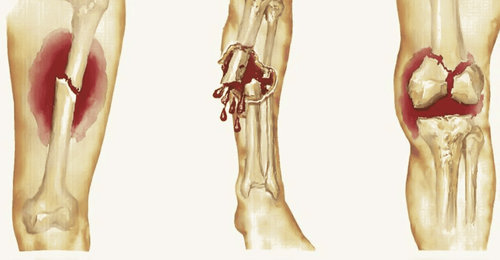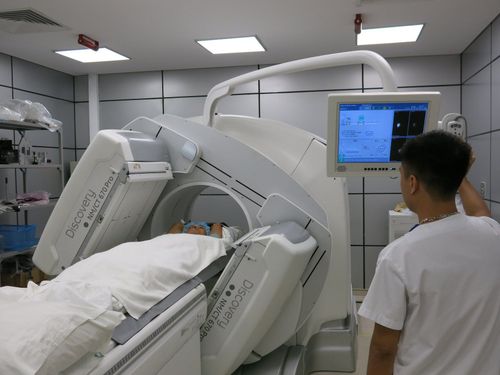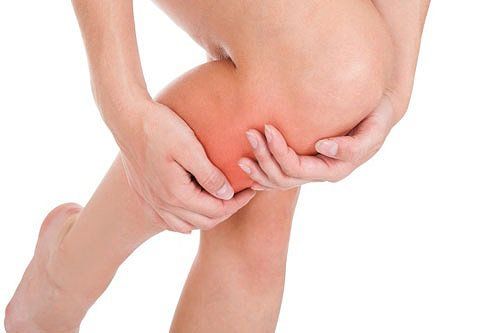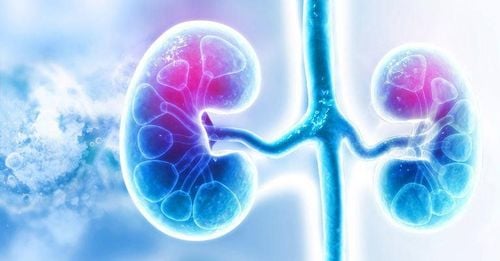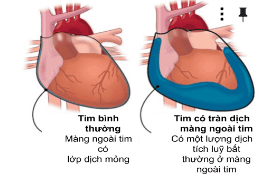This is an automatically translated article.
Abdominal injuries, especially kidney injuries, are increasingly common in Vietnam with common causes due to traffic accidents, occupational accidents, ... and mainly closed kidney injuries. One of the rare early complications of kidney injury is a pseudocyst in the urine, which accumulates without an outlet and needs to be treated early.
1. What is a urinary cyst after kidney injury?
Urinary cyst (urinoma) is a rare complication of kidney injury, defined as a bag of urine located next to the kidney and communicating with the urinary tract (capillary, renal pelvis, or ureter). This is the result of a severe kidney injury (ASST grade 3 or 4) with rupture of the renal parenchyma through the urinary tract, causing urine to leak around the kidney.2. Mechanism of urinary cyst formation
When urine enters the retroperitoneal space, it can cause lipolysis of the surrounding fat leading to encapsulation of these urine and the formation of urinary cysts. Common causes of urinary cysts are mainly secondary urinary tract obstruction:
Stones Ureteral obstruction Retroperitoneal fibrosis Retroperitoneal malignancy Cancer of the pelvis, ureter, bladder Regional trauma Abdominal, pelvic, such as kidney injury, bladder rupture or complications of interventional techniques such as ureteroscopy

Chấn thương vùng bụng gây nang niệu là nguyên nhân thường gặp nhất
3. How to diagnose urinary cyst?
Computed tomography (CT scan) is the main method used in the diagnosis of urinary leakage in the kidneys and cysts. The obtained CT image, in addition to supporting the diagnosis, also helps to further determine the extent of the patient's injury. Thus, even if a cyst is not suspected when computed tomography is performed, the diagnosis of a cyst can still be confirmed after the results are available.
Urinary cysts may exist as encapsulated cysts or as free urine. Most cysts, however, will leak into a subcortical or pericapsular site. In the case of spreading urine, it can spill through the aorta into the mediastinum or through the diaphragm into the pleural space.
In addition, bone scan or kidney scan can be used to diagnose renal cysts in cases where the patient is contraindicated for contrast injection such as:
High blood creatinine concentration Contrast Contrast Contrast Renal transplant If diagnosed If cysturia remains uncertain after imaging, percutaneous aspiration may be considered, where cysticuria will present with a marked increase in creatinine concentration and a decrease in glucose relative to serum levels.

Chụp cắt lớp vi tính là phương pháp chẩn đoán bệnh nang niệu an toàn, không xâm lấn
4. Treatment methods for urinary cysts
In most cases, small cysts are reabsorbed spontaneously and do not require drainage. However, if the cysts are large, persist for several days, or the patient has fever and signs of infection regardless of the size of the cyst, percutaneous drainage is required under the guidance of imaging.
Patients should be examined and treated at reputable hospitals to minimize complications after closed kidney injury. Vinmec International General Hospital is a high-quality medical unit in Vietnam, with a team of well-trained, specialized doctors at home and abroad, with high qualifications and experience.
Modern medical equipment, imported in the US, Japan, the Netherlands... supports the most effective diagnosis and treatment of diseases. Treatment techniques at Vinmec are regularly and continuously updated, keeping up with new trends of world health, providing the most effective treatment regimens.
To register for examination and treatment at Vinmec International General Hospital, you can contact the nationwide Vinmec Health System Hotline, or register online HERE.




